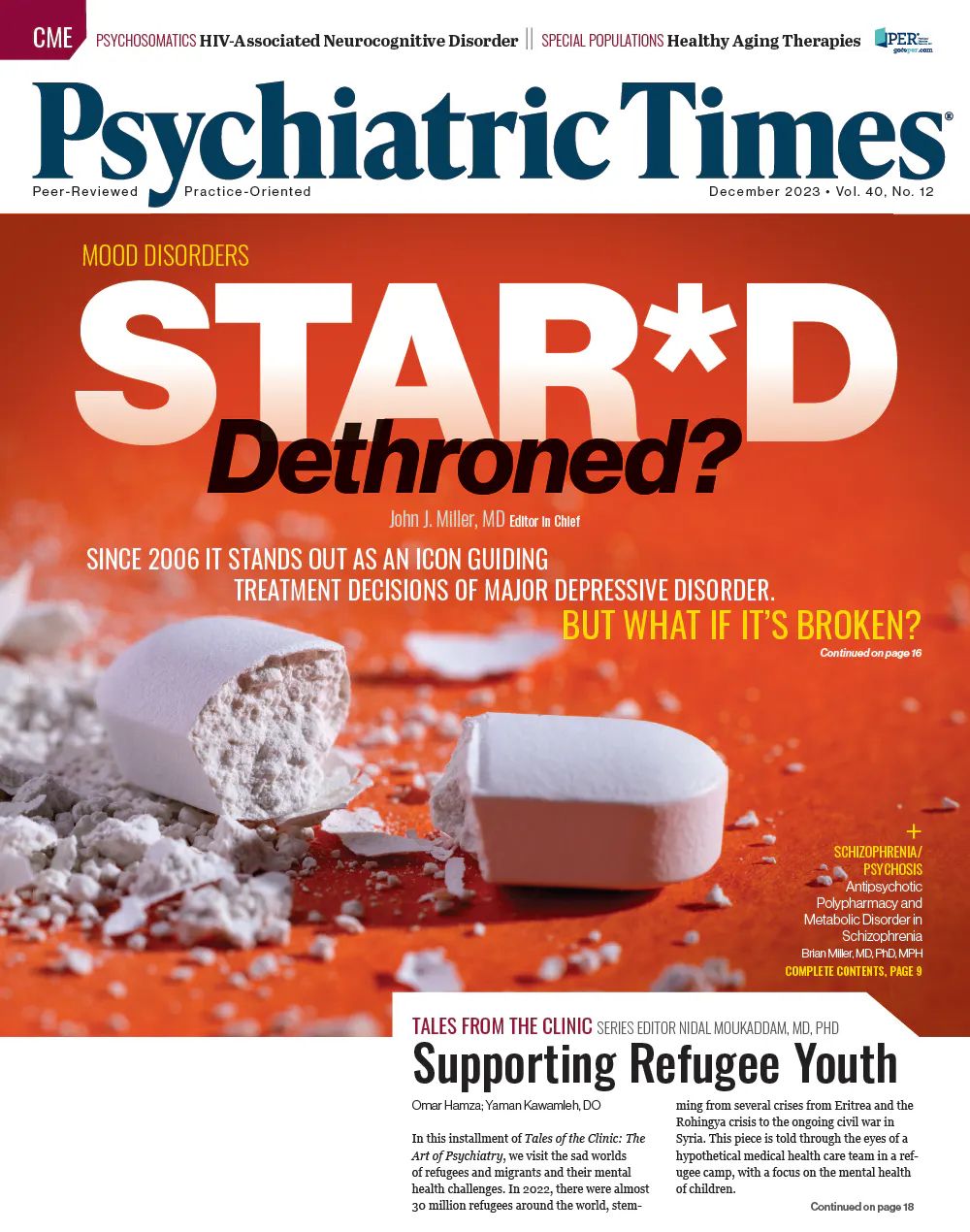From the Pages of Psychiatric Times: December 2023
The experts weighed in on a wide variety of psychiatric issues for the December 2023 issue of Psychiatric Times.

In the December issue of Psychiatric Times®, we worked with experts from multiple psychiatric areas to bring you thoughtful articles about a wide variety of psychiatric topics, from metabolic disorder risk in individuals with schizophrenia to the state of geriatric psychiatry in the United States. Here are some highlights from the issue.
Antipsychotic Polypharmacy and Metabolic Disorder Risk in Individuals With Schizophrenia
Microgen_AdobeStock

Individuals with schizophrenia die 20 years prematurely on average compared with the general population, in part because of cardiometabolic disorders, including obesity, diabetes, hyperlipidemia, and hypertension. Cardiometabolic adverse effects are common with antipsychotic medications.
Although it lacks a strong evidence base, antipsychotic polypharmacy (APP) is frequently used. Data on cardiometabolic effects of APP, which have the potential for increased adverse effects, are inconsistent and low quality. Continue Reading
STAR*D Dethroned?
Choi_Nikolai/AdobeStock

In the treatment of major depressive disorder (MDD), the acronym STAR*D stands out as a beacon guiding treatment decisions since 2006 when a series of publications reported the results from this massive, $35 million National Institute of Mental Health (NIMH)–funded research study.
Recently, a provocative and well-researched publication in the BMJ reanalyzed the original raw data obtained from the NIMH and challenged the conclusions of the STAR*D publications. Continue Reading
Geriatric Psychiatry in the US
zatevakhin_AdobeStock

The population of individuals ≥ 65 years is increasing in the United States. According to the 2020 Census, the population of these individuals grew nearly 5 times faster than the total population between 1920 and 2020. In 2020, there were 55.8 million individuals older than 65 years, constituting 16.8% of the US population. It is projected that there will be 78 million individuals ≥ 65 years in the United States by 2035.
Approximately 20% of older adults in the United States have a diagnosable psychiatric disorder. Personality disorders, anxiety disorders, mood disorders, and substance use disorders are the most common psychiatric disorders in this population, with a past year prevalence rate of 14.5%, 11.4%, 6.8%, and 3.8%, respectively. Continue Reading
Supporting Refugee Youth
Alan_AdobeStock

More than 108.4 million individuals in the world are currently displaced. Of these, 29.4 million are refugees and 62.5 million are internally displaced in their home countries, and 52% of these originate from Syria, Ukraine, and Afghanistan. These statistics are from 2022, a year that saw a significant increase of 19 million newly displaced individuals compared with 2021. Children make up about 40% of all forcibly displaced individuals. Between 2018 and 2022, it is estimated that 1.9 million children were born as refugees.
These numbers continue to rise each year, and as more children are being born as refugees, child- and adolescent-specific care becomes more and more important. While Syrians accounted for over 1 in 5 refugees globally, there was a massive increase in Ukrainian refugees in 2022, with numbers continue to rise rapidly. This rise is the highest since World War II. Continue Reading
See the full December issue of Psychiatric Times here. And be sure to stay up-to-date by subscribing to the Psychiatric Times E-newsletter.
Do you have a comment on any of these or other articles? Have a good idea for an article and want to write? Interested in sharing your perspectives? Write to us at PTeditor@mmhgroup.com.
